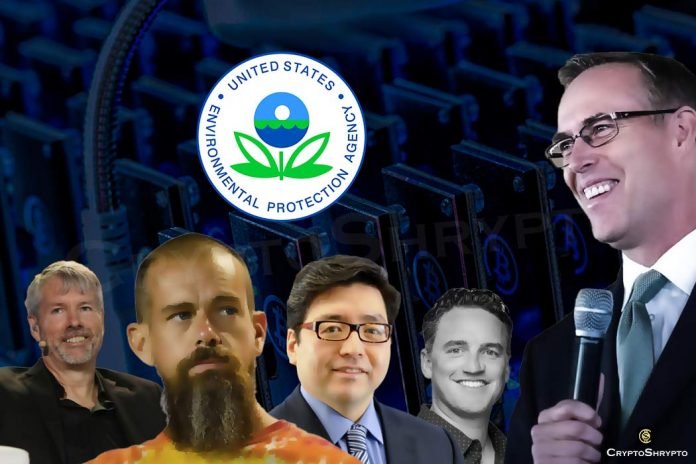US lawmakers led by Jared Huffman sent a letter to the US Environmental Protection Agency (EPA) asking them to investigate the possible impact of bitcoin mining on the environment in late April. On May 2, many pro-bitcoin industry leaders banded together to defend bitcoin mining. They have responded by writing their own letter to the EPA to clear up the confusion, clarify their mistakes, and educate the public.
According to MicroStrategy CEO Michael Saylor and dozens of other industry leaders, including Block’s Jack Dorsey, Fundstrat’s Tom Lee, and Digital Currency Group’s Mark Murphy, the lawmaker letter was “based on several misperceptions” about the world’s largest digital asset as well as mining practices.
Certain members of Congress sent a letter to the EPA premised on several misperceptions about #Bitcoin mining. We have authored a response to clear up the confusion, correct inaccuracies, and educate the public.https://t.co/Ks6fh9Cg0Z
— Michael Saylor⚡️ (@saylor) May 2, 2022
Their letter consists of eight points, all aimed at finding holes in Huffman’s demand for action, but beginning with the claim that it is the power generators, not the miners’ data centres, that are polluting the environment. The letter, signed by Saylor and 54 other industry leaders, says:
“Emissions are created at the power generation source upstream from data centres. Digital asset miners simply purchase electricity from the grid, the same as Microsoft and other data centre operators. “
Since there appeared to be some misunderstanding among lawmakers, the response clarified the distinction between a data centre and a power producing plant. Digital asset miners, like Microsoft and other data centre operators, just purchase power from the grid. That was in response to Huffman’s request for an examination of “proof-of-work” mining operations and their compliance with environmental regulations such as the Clean Air and Clean Water Acts in a letter to the EPA’s Michael Regan.
Lawmakers have also raised concern about bitcoin mining operations reviving previously abandoned coal or gas plants. This was countered by the fact that these two samples account for less than 2% of the Bitcoin network. The use of renewable energy was expanding, according to the industry leaders:
“In reality, the majority of digital asset miners are migrating away from fossil fuel-based electricity generation and are increasingly targeting renewables.”
According to lawmakers, bitcoin mining creates mountains of e-waste, although this assertion has been discredited. There is no indication of vast junkyards housing outmoded ASICs (application-specific integrated circuits), the gear used to mine bitcoin. Leaders remarked:
“To be clear: the claim that Bitcoin miners produce enormous quantities of e-waste is a purely academic fantasy.”
The leader’s letter concluded that public authorities required greater understanding before making broad allegations about the industry’s environmental effects.
“It is clear that education is required to ensure that public officials understand that the digital asset mining sector does not contribute to the environmental issues raised in the letter.”
Meanwhile, New York State legislators are debating a plan that would impose a 2-year ban on bitcoin mining operations that use carbon-based fuels and require an environmental impact study.
The tensions between US lawmakers and crypto firms seems to have amplified after China’s ban on bitcoin mining in 2021 prompted operators to set up factories in North America.




